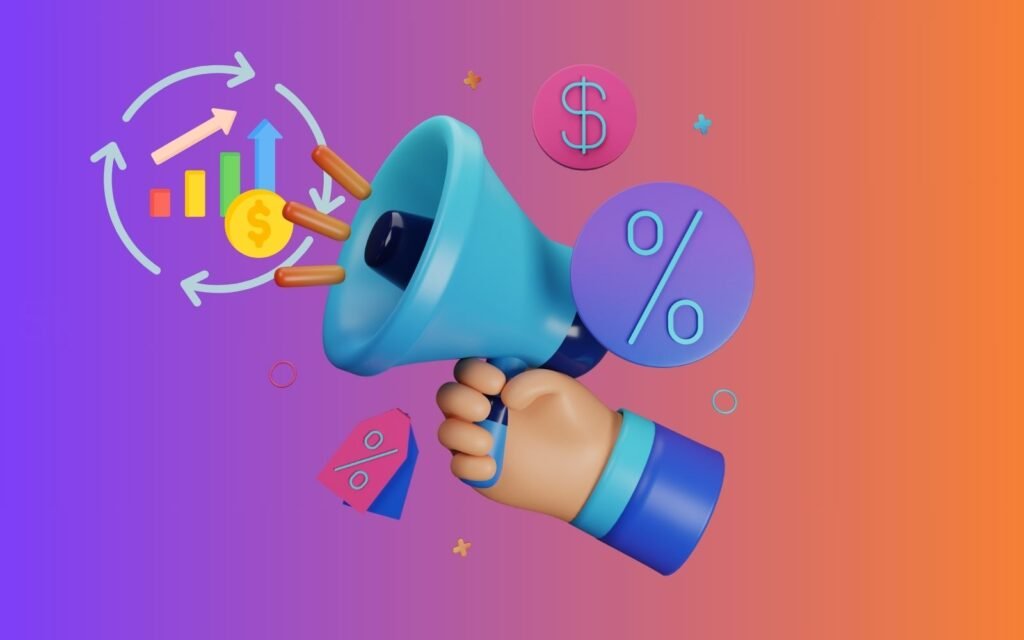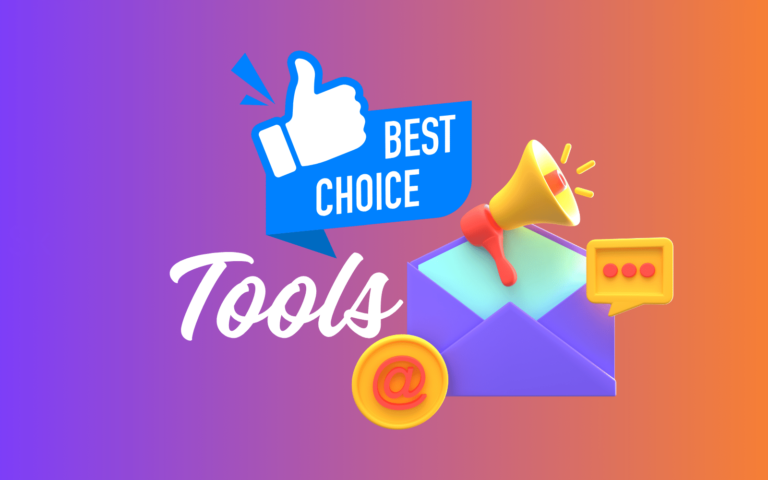The Impact of Marketing: How Marketing Affects Business Growth and Success

How does marketing shape a company’s future? How marketing affects business in profound ways, driving growth and boosting success.
It attracts customers, builds brand awareness, and increases sales. This post will display key strategies to harness the power of marketing. Learn how to transform your business and achieve outstanding results through effective marketing techniques.
Key Takeaway – How Marketing Affects Business
- Driving Growth: Marketing enhances visibility and attracts and retains customers, driving business growth.
- Balanced Strategy: Integrating traditional and digital approaches effectively targets diverse audiences and adapts to consumer trends.
- Customer Focus: Personalized experiences build loyalty by meeting customer needs and fostering strong relationships.
- Data-Driven Success: Analytics optimize ROI, ensuring long-term competitiveness and business success.
The Fundamentals of Marketing

Core Concepts
Target Market and Audience
Your target market defines who your business serves and shapes your marketing strategy.
By understanding your audience, you can create impactful campaigns. For example, a fitness app might focus on health-conscious millennials, while retirement planning services target baby boomers.
This targeted approach reduces customer acquisition costs and boosts conversion rates, leading to business growth and higher customer satisfaction. Identifying and catering to your target market is essential for success.
Marketing Mix (4 Ps)
The 4 Ps – Product, Price, Place, and Promotion – form the cornerstone of effective marketing.
- Product: This is what you’re selling, whether a physical item, a service, or a digital product. It’s important to ensure your product aligns with the needs and wants of your target market.
- Price: This reflects the value of your product and what your target market is willing to pay. It should be competitive but also reflect the quality and positioning of your product.
- Place: This covers the distribution channels through which your product reaches customers, whether online, in physical stores, or through direct sales.
- Promotion: This includes all the ways you communicate with your audience to raise awareness and persuade them to purchase, such as advertising, social media, and public relations.
Balancing these elements helps you develop a marketing strategy that truly connects with customers and boosts sales. Getting the right mix can greatly improve your marketing efforts and positively affect your bottom line.
Types of Marketing
Traditional Marketing
Traditional marketing includes techniques like print ads, TV commercials, and billboards. These systems can be very effective for specific audiences and local businesses. For example, a restaurant might use flyers to attract nearby diners.
These traditional methods are perfect for reaching older demographics or local communities. To succeed with conventional marketing, it’s essential to understand the media habits of your audience and create compelling messages that stand out.
Digital Marketing
Digital marketing leverages online channels to reach customers. It includes search engine marketing, social media marketing, and email campaigns. For instance, an e-commerce store might use Facebook ads to drive traffic to its website.
Digital marketing strategies allow for specific targeting and real-time measurement, enabling businesses to optimize their activities for better Return on Investment (ROI) and increased website traffic.
This data-driven approach ensures that marketing activities efforts are both effective and efficient.
Inbound Marketing
Inbound marketing attracts customers through valuable content. It includes blogging, videos, and social media engagement. For example, a software company might create tutorials to establish expertise.
This process builds trust and nurtures relationships with potential buyers. Inbound marketing is effective for B2B and industries with longer sales cycles, focusing on lead generation and content marketing.
Consumer-to-Consumer Marketing
Consumer-to-consumer (C2C) marketing leverages customer recommendations. It encourages satisfied customers to share their experiences. For example, a hotel might ask guests to post photos of their stay on Instagram.
This marketing strategy builds trust through authentic, user-generated content. It’s powerful for expanding the customer base organically and enhancing brand awareness through genuine customer experiences.
Marketing Strategies and Their Impact

Developing Effective Marketing Strategies
Effective marketing strategies drive business success. Start by setting clear goals and analyzing your target market. Create a unique value proposition to stand out. Choose the right mix of marketing channels, including digital, traditional, and inbound marketing.
For example, a tech startup might focus on young professionals using social media and content marketing. Review and adjust your strategy using key performance indicators to stay competitive and maximize ROI.
Key Elements of Successful Marketing Campaigns
Successful marketing campaigns have clear messages that connect with the target audience emotionally. Storytelling is key to building these connections. Using multiple marketing channels expands reach and visibility. Strong calls to action prompt immediate responses from customers.
Data-driven approaches help measure campaign significance accurately. For instance, a local bakery could use social media posts, email newsletters, and in-store promotions to increase sales and engage customers effectively.
Impact on Business Growth
Creating Awareness
Creating brand awareness is about introducing your brand to potential customers. Social media and content marketing are effective tools to educate consumers about your products or services. As awareness grows, you can expect higher website traffic and increased sales.
These campaigns also influence how customers perceive your brand, promoting loyalty and positive word-of-mouth recommendations. This recognition is important for sustained business growth and improving your position in the market over time.
Lead Generation
Lead generation is important for boosting sales by attracting potential customers. Strategies like content marketing, search engine marketing, and targeted advertising help you reach your target audience effectively.
Offering valuable content in business for contact details allows for generating qualified leads. This system helps attract more customers and boosts sales efficiency, driving overall business growth and increasing revenue.
Customer Acquisition
Marketing plays an important role in guiding potential buyers through their decision-making journey. Utilize retargeting ads and email campaigns to nurture leads over time.
Offer value consistently at every interaction, addressing customer concerns and highlighting product benefits. Effective purchase strategies drive immediate sales and lay the groundwork for long-term customer relationships, enhancing lifetime value.
Building Relationships with Customers
To increase customer lifetime value and loyalty, prioritize building relationships with existing customers. Use personalized email campaigns and loyalty programs to keep them engaged.
Respond promptly to customer feedback on social media platforms to show you value their input. For instance, a local gym could send tailored workout tips to its members based on their fitness goals. Building strong customer relationships often leads to positive reviews, referrals, and ongoing business growth.
Digital Marketing in the Modern Business Landscape

Search Engine Marketing
Search engine marketing (SEM) is important for enhancing your online visibility. Combining paid ads with search engine optimization (SEO) helps boost your website’s ranking in search results.
A plumber could use Google Ads targeting searches like “emergency services” to drive traffic to their website and generate leads efficiently. SEO focuses on boosting organic search rankings by producing valuable, high-quality content that meets search engine guidelines.
When SEM and SEO are utilized together strategically, they can significantly increase brand awareness, attract potential customers, and stimulate business growth.
This holistic approach is important for digital marketing strategies to maximize return on investment (ROI) by effectively connecting with and engaging specific audiences online.
Social Media Marketing
Social media marketing helps businesses connect with their target audiences. Platforms like Instagram and LinkedIn provide chances to interact with people. A fashion store can show off its new clothes and hold contests on Instagram. This improves customer satisfaction and brand loyalty.
Social media also gives businesses information to improve their marketing strategies. It enhances more people’s brand awareness, brings website traffic, and boosts sales.
Occasionally, excellent campaigns can gain significant traction, reaching a wide audience at minimal cost. In general, effectively using social media can assist businesses in connecting with customers, growing their audience, and increasing product sales.
Content Marketing
Content marketing uses helpful information to draw in people. These inbound marketing businesses look reliable and knowledgeable. A software company might write blogs and host webinars about topics in their industry.
This makes their website show up higher in search rankings, brings more visitors to their website, and gets them quality leads. Content marketing reduces customer acquisition costs while boosting customer lifetime value. It’s important to become a leader in your industry and make your brand stand out in a busy market.
Email Marketing
Email marketing offers direct customer communication. It’s universal for newsletters, promotions, and personalized recommendations. An online bookstore might send tailored suggestions based on purchase history. Email nurtures leads, encourages repeat purchases, and re-engages inactive users.
Advanced segmentation and automation improve targeting. This personalized approach boosts open rates, click-through rates, and conversions. Email marketing is important for customer retention and maximizing customer lifetime value.
Measuring Marketing Success

Key Performance Indicators (KPIs)
Key Performance Indicators (KPIs) measure marketing strategy success. They track progress toward goals and guide optimization. Common KPIs include website traffic, conversion rates, and social media engagement.
An e-commerce store might monitor click-through rates and cart abandonment. B2B companies often focus on lead generation from content marketing. Regular KPI review allows for agile decision-making and effective marketing adjustments.
Customer Acquisition Cost
Customer Acquisition Cost (CAC) is the money a company spends to get new customers. You calculate it by dividing all the costs for marketing and sales by the number of new customers you gain.
If a software company spends $10,000 on marketing and sales efforts and gets 100 new customers, its CAC is $100 ($10,000 / 100 customers).
A low Customer Acquisition Cost (CAC) indicates that your marketing strategies are effective, while a high CAC suggests adjustments may be necessary to improve performance.
It’s important to ensure that your Customer Acquisition Cost (CAC) remains lower than your Customer Lifetime Value (CLV) to maintain profitability and foster business growth over the long term.
Customer Lifetime Value
Customer Lifetime Value (CLV) predicts how much revenue a customer will bring over their entire relationship with your business. It’s an important metric for long-term business success.
To calculate CLV, multiply the average value of a customer’s purchases by how often they buy from you and how long they stay your customer.
Increasing CLV is key to keeping customers longer and making more profit. You can achieve this with personalized marketing, loyalty programs, and customer service. These strategies build stronger relationships and keep customers coming back.
Return on Investment (ROI)
Return on Investment (ROI) shows how profitable your marketing activities are. It compares the revenue you make from them to what you spend.
To calculate ROI, remove your marketing costs from your sales growth, divide that by your costs, and multiply by 100. For example, if a $1,000 campaign brings in $5,000 in sales, the ROI is 400%. Different marketing channels have different ROIs.
Tracking ROI helps you decide where to invest your money for the best results.
The Role of Marketing in Customer Relationships

Enhancing Customer Satisfaction
Marketing strategies play a key role in boosting customer satisfaction. Companies can tailor their offerings and communications by understanding customer needs and preferences.
A hotel chain might use data from past stays to personalize room luxuries for returning guests. Social media marketing allows businesses to respond quickly to customer feedback, showing they value customer opinions.
Content marketing can provide helpful information and solve customer problems before they arise. These efforts show customers that the company cares, leading to higher satisfaction and stronger brand loyalty.
Improving Customer Experience
Marketing influences how customers experience your brand at every interaction. A smart digital marketing strategy ensures your message is clear and consistent across all platforms, making the customer journey smooth.
A retail store might use location-based targeting to send mobile alerts about in-store deals when customers are nearby. Email marketing can also offer personalized product suggestions based on what customers have bought.
By prioritizing positive relations, marketing builds a customer-focused culture that improves the overall experience and boosts business growth.
Retaining Existing Customers
Retaining existing customers is usually cheaper than finding new ones. Marketing strategies that highlight retention can boost customer lifetime value. Loyalty programs, special deals, and personalized messages show customers they matter.
A coffee shop might use a mobile app to keep track of purchases and offer a free drink after ten buys. Content marketing can also keep customers interested by offering useful information, even when they’re not shopping.
These efforts build stronger connections, often leading to repeat business and positive recommendations to others.
Attracting New Customers
Marketing is important in attracting new customers and growing the customer base. Inbound marketing techniques like SEO and content marketing in inbound marketing help businesses appear in online searches when potential customers are looking for solutions.
Social media marketing can also expand brand visibility and connect with new audiences. A local gym might use targeted Facebook ads to reach people interested in fitness nearby.
By effectively communicating what makes the business unique and addressing customer needs, marketing can turn potential buyers into actual customers, which leads to business growth.
Marketing’s Influence on Sales and Revenue

Increased Traffic and Wider Audience Reach
Marketing strategies boost website traffic and grow audience reach. Digital marketing tactics like SEO and social media marketing put businesses in front of more potential customers. A small online bookstore might use Instagram ads to target fans of a specific genre.
Content marketing, such as blogs or videos, attracts readers searching for product-related information. This approach draws a wider audience and establishes brand authority.
A tech company’s how-to videos might attract viewers who later become customers. These efforts increase visibility, site visitors, and potential buyers, directly impacting business growth.
Converting Potential Customers into Buyers
Effective marketing turns potential customers into buyers. Sales marketing strategies guide prospects through the buying journey. An email campaign offering a limited-time discount can nudge hesitant shoppers to purchase.
Retargeting ads remind visitors of viewed products, often completing sales. Inbound marketing techniques, like detailed product information or customer reviews, build trust and overcome objections.
A furniture company might use 3D visualization tools to help customers see products in their homes, increasing purchase confidence. By addressing needs at each buying stage, marketing boosts conversion rates and overall sales.
Upselling and Cross-Selling to Existing Customers
Marketing maximizes value from existing customers through upselling and cross-selling. These strategies increase average order value and customer lifetime value. A software company might use in-app notifications to promote premium features to basic users.
An e-commerce site could recommend complementary products based on purchase history. A camera retailer might suggest lenses or tripods to recent camera buyers.
Personalized email campaigns can highlight new products aligned with customer preferences. These targeted efforts grow revenue from the current customer base without high new customer purchase costs.
Adapting Marketing Strategies for Long-Term Success

Staying Ahead of Market Trends
Marketing strategies must change with market trends. Businesses monitor industry changes, customer preferences, and new technologies. Voice search changes how companies approach SEO and updates to social media algorithms, meaning content strategies must adapt.
A clothing retailer might shift to focus on sustainable fashion trends. By anticipating these trends, businesses can stay relevant to their target audience and remain competitive.
Utilizing Data and Analytics
Data drives effective marketing. Analytics tools give insights into customer behavior and campaign performance. An e-commerce site might use Google Analytics to find the best marketing channels.
Social media analytics can show when engagement is highest. B2B companies personalize emails using CRM data. This data-driven approach improves ROI and helps plan future marketing strategies.
Continuous Optimization of Marketing Efforts
Successful marketing requires ongoing improvement. Marketers review key performance indicators (KPIs), test new approaches, and adjust strategies.
A software company might A/B test landing pages to boost conversion rates. Retailers could experiment with different ad formats to lower customer purchase costs.
Content marketers use heat maps to see how visitors interact with blogs and improve engagement. This continuous improvement enhances marketing campaign effectiveness, leading to sustained business growth.
Challenges and Opportunities in Modern Marketing

Navigating Multiple Marketing Channels
Modern marketing affects numerous marketing channels to reach the target audience. Each channel offers unique benefits and challenges, From social media and content marketing to traditional marketing methods like print ads and TV commercials.
Effective marketing strategies use a mix of these channels to engage a wider audience and create awareness about a product or service. Understanding each platform’s key performance indicators is important for driving business growth.
Balancing Traditional and Digital Marketing Approaches
Balancing traditional marketing with digital marketing strategies is key to a successful business. Traditional methods like direct mail and TV ads are effective for certain demographics and create awareness among potential customers.
Meanwhile, digital marketing tools like search engine and social media marketing provide real-time insights. Combining these strategies helps businesses reach their target market through various marketing channels, leading to better customer satisfaction and a stronger customer base.
Addressing Changing Consumer Behaviors
Customer behaviors are constantly growing, requiring businesses to adapt their marketing strategies. The rise of inbound marketing and digital platforms has changed how potential customers find and engage with brands.
Modern consumers expect personalized experiences and high customer satisfaction. Focusing on good relationships, understanding customer needs, and providing personalized experiences enhances lifetime value.
By adapting to these changes, companies can attract new customers, retain existing customers, and boost sales and business growth.
Summary
Marketing is important for business success. It drives growth by connecting businesses with their audience, boosting sales, and nurturing brand loyalty.
With strategic planning and innovative campaigns, businesses can tackle challenges and capitalize on opportunities, ensuring long-term success in today’s competitive market. Marketing goes beyond promotion; it’s about building strong relationships and shaping companies’ future.
Frequently Asked Questions
How Does Marketing Contribute to Business Growth?
Increases brand visibility, attracts new customers, and retains existing ones.
What Are the Key Marketing Strategies for Business Success?
Target audience analysis, compelling messaging, omni-channel approach, and analytics-driven optimization.
Can Effective Marketing Increase Sales and Revenue?
Yes, by generating leads, converting them into customers, and maximizing customer lifetime value.
How Does Digital Marketing Impact Small Businesses?
Levels the playing field, reaches wider audiences cost-effectively, and enhances customer engagement.
What Role Does Social Media Play in Modern Marketing?
Builds brand awareness, fosters customer relationships, and drives website traffic.
How Can I Measure the ROI of My Marketing Efforts?
Track metrics like conversion rates, customer acquisition cost, and lifetime value.
What’s the Difference Between Traditional and Digital Marketing?
Traditional uses offline channels like TV and print; digital uses online platforms such as social media and email.
How Does Content Marketing Drive Business Growth?
Positions the business as an authority, educate prospects and nurtures leads into customers.
What Are the Most Cost-Effective Marketing Strategies for Startups?
Content marketing, social media marketing, SEO, and email campaigns.
How Does Marketing Help in Building Brand Awareness and Customer Loyalty?
Creates consistent messaging, engages customers, and fosters trust and loyalty over time.





